Innovation only works for people if participation is core
- 30/07/2019


It has been quite a journey! In 18 months, we've seen four innovation labs spring into operation among communities living in some of the world's toughest disaster areas. These game-changing innovation teams, Udhvabani, Bangladesh, Mahali, Jordan, Maarifa Kona, Kenya and TUKLAS in Philippines put huge effort into backing local initiatives focused on strengthening peoples’ abilities to prepare for, manage and survive recurrent and protracted crises. Here's their story!
CDAC Network has been there every step of the way in the early design of the Disasters and Emergencies Prepardness Programme funded by UK Aid and the more recent innovation window driving localisation and integrating communication and community engagement as a cornerstone of participatory approaches to humanitarian innovation. We’ve seen first-hand how innovation will only work long term for people affected by disaster if they have a key role in the process and outcomes are, to some degree, locally owned and led.
The labs put user- or human-centred design to the test and developed creative ways to enable people to participate and progress through structured innovation programmes that have grown early-stage solutions or kernels of ideas into market-ready businesses or sustainable social initiatives. More than 90 individuals or groups have received tailored support to progress their initiatives.Over 70 innovations have been through incubation and supported to access future funding, partnerships and investments, and 40% of them have secured future support
The resulting portfolio is diverse with strong emphasis on strengthening preparedness among communities hardest hit by disasters. These brilliant, locally-rooted solutions offer long term benefit in areas such emergency education for deaf children, housing and employment opportunities for refugees in Jordan, innovative water harvesting methods and heat resistant housing in Bangladesh, innovative dairy and food production services and drought resistant livestock feed in Kenya and virtual reality disaster training and flood warning sensors in Philippines
Our approach has surfaced some unique challenges in managing expectations and building trust along what is an uncertain and risky road – results are not always guaranteed and ideas get rejected or fail. We've seen increasing interactions between actors new to the humanitarian sector and vulnerable people, which has forced us to rethink roles, responsibilities and values in areas such as safeguarding and redesign systems and training to accommodate these new partnerships carefully.
This extensive learning and innovative practice has been captured in a series of practical tools and guidance ranging from selecting viable business models in fragile and at-risk environments, exploring the 'lab' innovation model to co-designing with people living in disaster-affected places




















